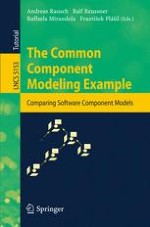2008 | Buch
The Common Component Modeling Example
Comparing Software Component Models
herausgegeben von: Andreas Rausch, Ralf Reussner, Raffaela Mirandola, František Plášil
Verlag: Springer Berlin Heidelberg
Buchreihe : Lecture Notes in Computer Science
